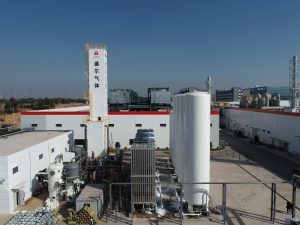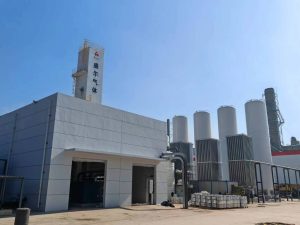1. Introduction: What Is Cryogenic Air Separation
Cryogenic air separation is a core process used to produce high-purity oxygen and nitrogen gases for modern industries.
By cooling atmospheric air to extremely low temperatures, this technology liquefies air components and separates them based on their boiling points — oxygen at −183°C and nitrogen at −196°C.
Through precision distillation inside cryogenic air separation units (ASU), industries obtain consistent, reliable, and high-quality gas supplies for manufacturing and processing.
At Sheng Er Gas (HK), we specialize in advanced air separation technology designed for long-term stability and energy efficiency.
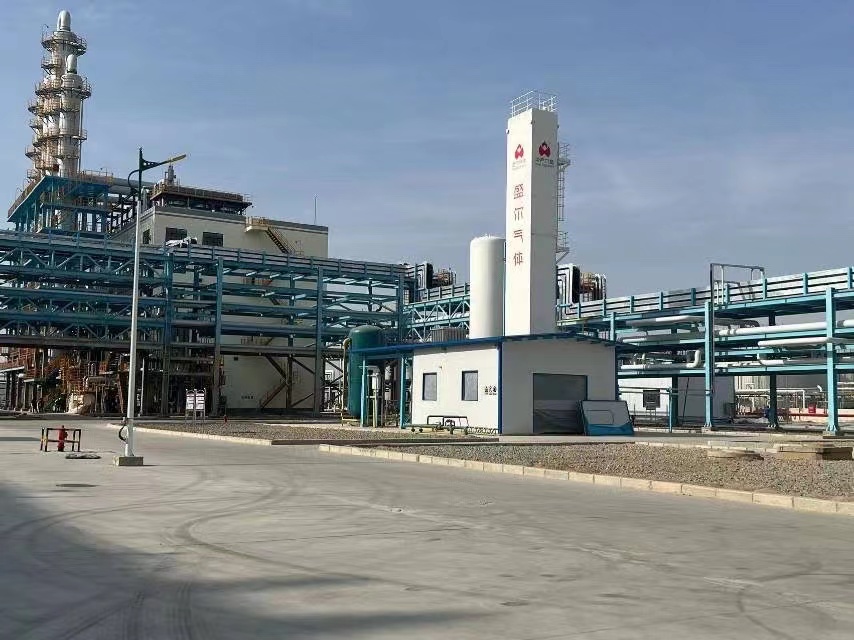
2. Oxygen vs. Nitrogen
Both oxygen and nitrogen are produced through low-temperature air separation, although their design goals differ.
Oxygen systems focus on achieving higher purity levels, while nitrogen systems emphasize stable output and energy efficiency.
Oxygen Production:
- Air is compressed, purified, and pre-cooled.
- The air enters a separation column, where it is partially liquefied.
- Through high- and low-pressure distillation, oxygen is obtained as a liquid or gas with purity up to 99.999%.
Nitrogen Production:
- Air undergoes filtration and pre-cooling in a main heat exchanger.
- Inside the distillation tower, nitrogen is isolated from oxygen at low temperature.
- High-purity nitrogen (99.9%–99.999%) is collected, and waste nitrogen is recycled as a cooling medium.
You can learn more about nitrogen generation systems on our
👉 Nitrogen Generator page
or explore oxygen production solutions on our
👉 Oxygen Plant page.
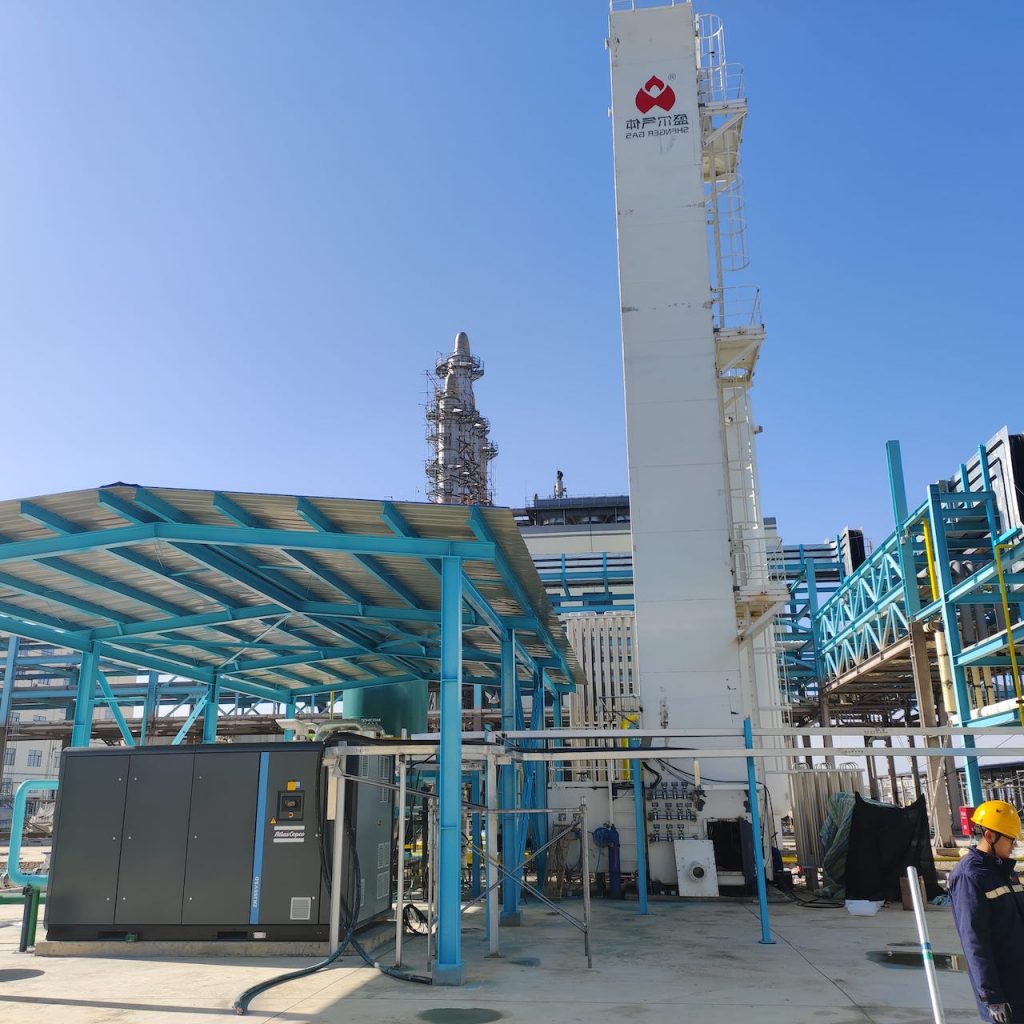
3. System Design and Operation
A cryogenic air separation system must maintain precise temperature and pressure balance to keep the process stable.
Oxygen plants commonly use dual-column configurations, while nitrogen facilities employ a single-column design for simpler operation and lower energy use.
Automation is essential — at Sheng Er Gas (HK), each installation features advanced PLC control for real-time monitoring, optimized power consumption, and integrated safety interlocks.
Regular calibration and maintenance help sustain long-term reliability and consistent operating performance.
For an overview of global industrial gas standards, visit
🌐 Wikipedia: Air Separation.
4. Purity, Energy Use, and Applications
The cryogenic air separation process provides high-purity oxygen, nitrogen, and argon for various industries.
| Parameter | Oxygen System | Nitrogen System |
|---|---|---|
| Main Product | Gaseous / Liquid Oxygen | Gaseous / Liquid Nitrogen |
| Purity Range | 99.6%–99.999% | 99.9%–99.999% |
| Energy Demand | Higher | Lower |
| Key Applications | Steelmaking, Chemical Oxidation, Medical Oxygen | Electronics, Food Packaging, Petrochemical Inerting, Laser Cutting |
From heavy industry to precision manufacturing, cryogenic air separation ensures consistent purity, safety, and energy efficiency.
5. Energy Efficiency and Maintenance
Energy use within cryogenic air separation systems varies according to plant size, process configuration, and overall efficiency.
Oxygen facilities generally require more refrigeration power, whereas nitrogen units operate with lighter cooling cycles and lower energy demand.
Consistent maintenance — such as valve inspection, compressor tuning, and tower temperature checks — keeps performance stable and minimizes energy loss.
Modern automation and smart control platforms enable real-time monitoring, predictive fault detection, and reliable long-term operation across the entire air separation process.
6. Economic and Technical Selection
Choosing the right cryogenic air separation system depends on plant capacity, product purity, and energy budget.
If the process involves oxidation or combustion, an oxygen plant is suitable.
For inerting, packaging, or laser cutting, nitrogen systems are more efficient.
Sheng Er Gas (HK) provides full EPC (Engineering, Procurement & Construction) solutions, from design to commissioning, ensuring global clients receive safe and efficient air separation systems tailored to their applications.
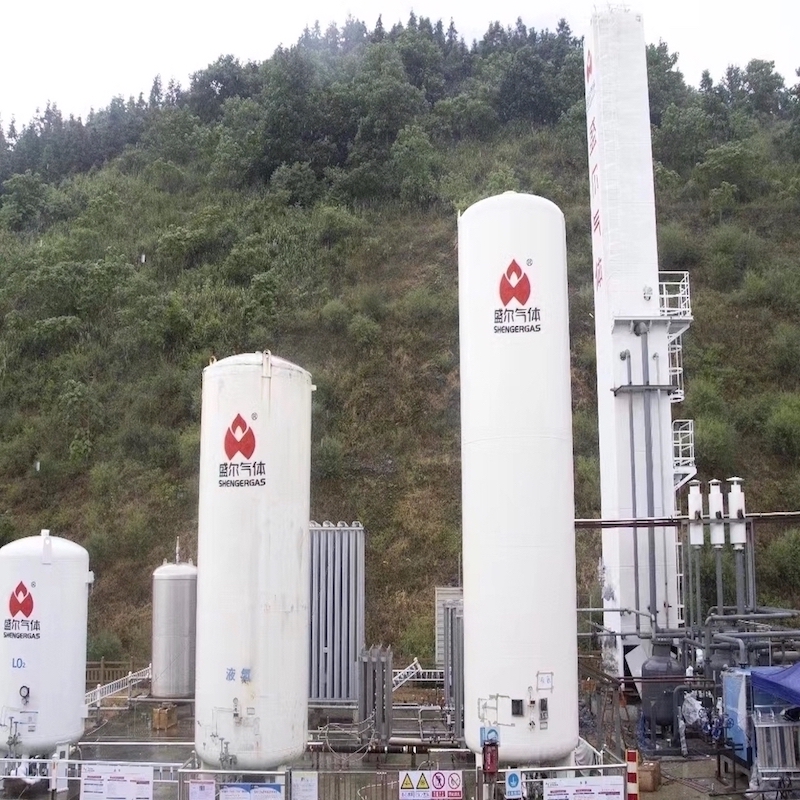
7. Conclusion: The Importance of Cryogenic Air Separation
In conclusion, cryogenic air separation remains the cornerstone of industrial gas supply.
It enables continuous production of oxygen and nitrogen at world-class purity levels, supporting sectors from metallurgy to healthcare.
With advanced cryogenic air separation technology, Sheng Er Gas (HK) continues to deliver reliable, energy-efficient solutions that power industries worldwide.

